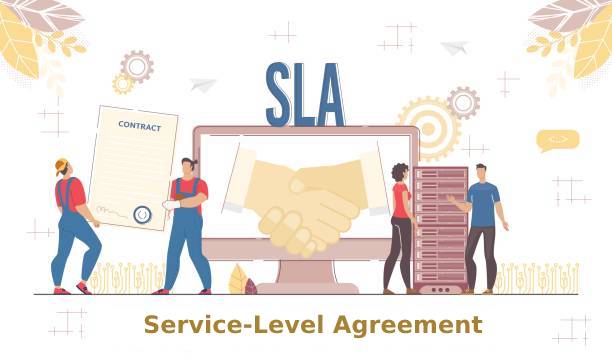When you are dealing in a service industry, it is important to make sure every service is provided in the same way it is expected. To ensure it, you must have a legal agreement that is called SLA (Service-level agreement). In the first instance, creating an SLA might look challenging but once you know what you should and should not include in your SLA, you will know what exactly you want from the service providers and as a business owner.
What is an SLA (Service-Level Agreement)?
An SLA is a legal agreement that clarifies the level of services you expect from a service provider or a vendor and split out the metrics by which you can measure the services, including penalties (if agreed services do not match) and resolutions. It is an essential element for whoever is dealing in the service industry.
In the customer service-based industry, an SLA acts as a pillar of the service that offers an assurance to protect the company’s significant assets and services they offer, which becomes the most important document for the organization. Let us see why SLAs are important for technical service providers and businesses using the services.
Why Having SLAs are Important?
When you conduct your research, you will come across many terms and explanations about SLA. Most of them will say it is just a contract between a service provider and an organization taking up the service. But the fact is it is not just a contract, but it is a kind of a legal agreement that includes mutually agreed terms and conditions by both parties.
SLA is created to ensure that the service provider meets all required terms including technical support services, faster uptime, quick response for emails, and FCR (first call resolution).
Some of the services providers want that they continue offering services without having any bond so that they can rescue even if big problems occur. It becomes essential for organizations that are using third-party service providers for technical services to ensure each service is performing well.
The Benefits of Service Level Agreement
As we discussed the SLA is a mutual agreement between an organization and a service provider that indicates obligations and expectations from the opted services. An SLA should be in place to nurture most of the benefits from the services you have opted for. Here are several benefits of SLAs that you should know if you are still in doubt about SLAs.
Improved Customer Service
With SLAs service providers and service users will be able to give and take excellent customer service. It gives clarity to both parties and improves customer services without creating any problems.
Simplified Communication
The IT service desk employees will be able to address the customer expectations in two ways. First, they prioritize the requirements based on the definitions mentioned in the SLA document and set their maximum time accordingly to resolve the case. Second, they go through the periodic performance reports to analyze how the services are performing. Based on these two ways the team will be able to resolve most of the problems much less than the maximum time.
Defined Procedures
With SLAs, there will be defined procedures that should be followed by both the service provider and the end-users. When you introduce SLA to your organization by posting it to employees’ handouts or on the official intranet, it becomes an “official” agreement. Whenever there is any kind of dispute the SLA can be the trusted resource. In other words, it sets the standard for customer services so that both parties do not have to face any trouble.
Clear and Measurable Guidelines
An SLA is key to make sure you and your service provider both are on the same page regarding the terms and conditions of the services. When you create a service level agreement, you and your service provider need to set clear and measurable guidelines to reduce the chances of disappointment. This guideline will also help you and your client with an alternative if commitments do not meet.
Penalties for Unmet Commitments
In case a service provider fails to meet their commitment, there should be significant penalties so that you will rest assured. In your SLA you must mention the consequences if the performance standards do not match. Such regulatory penalties may be able to help your organization if there is any major loss occur. In short, SLA is an important way to protect your organization’s reputation.
However, having an SLA is not enough, you should continuously review it from time to time and/or make changes to it after discussing it with your service provider. Because your requirements might get change with your organization’s evolving needs.
Key Take Away
An SLA is key to protecting your organization and establishing a successful relationship with the service providers. Mutual understanding in identifying the performance standard is important to create a positive environment for all involved parties.
An SLA provides peace of mind to the organization. It is a contract that everyone in the organization can refer and that allows them to keep their service provider responsible. It lists out the details exactly the type of service is expected from the service provider. If agreed-upon requirements are not met, they can mitigate major impacts by monetary compensation through the service provider. Thus, for some organizations, SLA may provide peace of mind and reassurance.
















